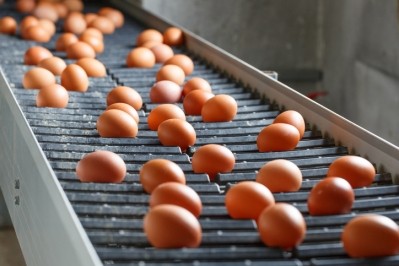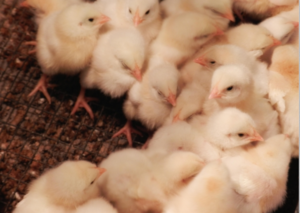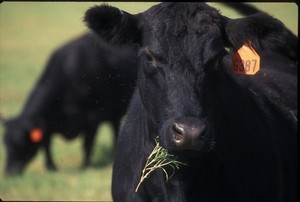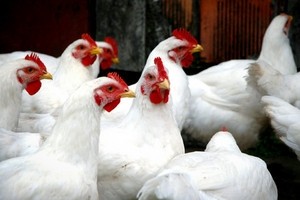What role does feed form, particle size play in broiler feed?
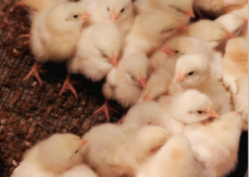
Researchers based in Iran and New Zealand tracked the influence of both pelleted and mash diets on broilers along with the effect of feeds ground to different sizes.
Their study was published in the journal Animal Feed Science and Technology.
The group sought additional understanding of how form and particle size altered performance, coefficient of apparent ileal digestibility (CAID), intestinal morphology and apparent metabolically energy (AME).
“Overall, the present data showed that coarse grinding of maize, through enhanced gizzard development and functionality, is beneficial to nutrient and energy utilization and growth performance in broilers fed pelleted diets,” found the team.
Form and size
Maize is a common ingredient in poultry feed, and established practice is to grind the grain before feeding it, said the authors. Research in the area has been inconsistent, they found.
“Although the influence of maize particle size on growth performance in broilers has been investigated in a number of studies, information on the utilization of nutrients and energy is limited,” they said. “Moreover, the effect of particle size on nutrient utilization is confounded by the physical form of feed (mash or pellet).”
Little research has been done on the relationship of feed form, particle size and use of minerals other than calcium and phosphorus, they said. Nor has much consideration been given to the influence that form and particle size may have on intestinal morphology.
Experiment details
In the experiment, 288 broilers were given one of six diets, said researchers. The diets were either mash or pelleted, and ground to one of three particle sizes – fine 2mm, medium 5mm and coarse 8mm.
Body weights were taken by cage weekly and noted for 21 days, feed intake and excreta were recorded from day 17-20, and digesta transit time was checked, they said.
Excreta were examined for dry matter (DM), gross energy (GE) and confirmation, they said. Six birds were harvested on day 21 and their ileal digesta were collected and tested for DM, titanium, nitrogen (N), starch, fat, calcium (Ca), phosphorus (P), sodium, potassium, magnesium, cupper, manganese and zinc.
A sample of birds per cage were weighed and harvested to examine their gastrointestinal tract, organs, small intestine, caeca and the weights of collected organs were recorded, they said. Sections of the duodenum and jejunum also were collected and the pH levels of the gizzards were documented.
Results
Birds on the pelleted diets outperformed the birds getting mash diets, said researchers. The birds getting pelleted feed had better weight gain and higher feed intake.
In the mash diets, birds getting the finely ground diets had reduced feed per unit gain when compared to birds getting other mash diets, they said. “Pelleting increased excreta score and reduced excreta DM [dry matter] content compared to mash diets,” they added.
Dry matter digestibility was not change by the different diets, they said. But, pelleting improved the digestion of dietary fat.
“As broiler diets are usually pelleted, it would appear that coarse grinding of maize could be beneficial for nutrient and energy utilization in broiler chickens while maintaining physical pellet quality,” said researchers. “Moreover, coarse grinding in pelleted diets would also be preferable because of considerable energy saving may be achieved by increasing the sieve openings.”
Pelleting the feed limited the CAID of calcium and phosphorus, but bumped CAID of sodium, they said. It also reduced the length of small intestinal segments and the weights of pancreas, proventriculus and gizzard.
But, medium and coarse grinding improved the weight of the pancreas compared to a finely ground diet, they said.
“In both the duodenum and jejunum, birds fed pelleted diets had greater villus height than those fed mash diets,” said researchers. “Goblet cell number in duodenum was higher in birds fed diets containing fine particles compared to those fed medium and coarse particle sizes.”
The crypt depth in jejunum was greater for broilers getting the pelleted diets, they said.
Gizzard pH was similar regardless of grinding size in birds getting the mash diets, they said. However, bird eating pellets made from finely ground feed had increased gizzard pH when compared to other birds getting pellets.
“Pelleting reduced the CAID of nitrogen but increased the ileal fat digestibility,” said researchers. “Particle size had no effect on CAID of starch and AME in mash diets, but in pelleted diets, pellets made from medium and coarsely ground maize showed higher starch digestibility.”
A coarser grind increased AME in the pelleted diets, they said, led to better calcium digestibility.
Source: Animal Feed Science and Technology
Title: Influence of feed form and particle size on performance, nutrient utilization, and gastrointestinal tract development and morphometry in broiler starters fed maize-based diets
DOI: available online before print doi:10.1016/j.anifeedsci.2016.02.012
Authors: S. Naderinejad, F. Zaefarian, M.R. Abdollahi, A. Hassanabadi, H. Kermanshahi, V. Ravindran
